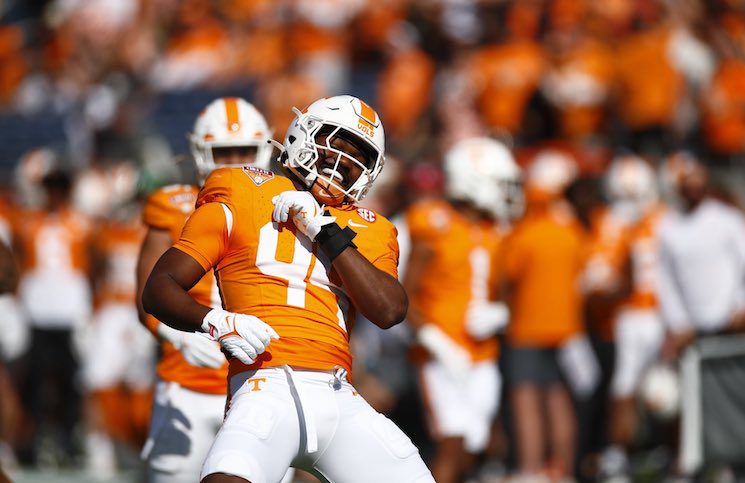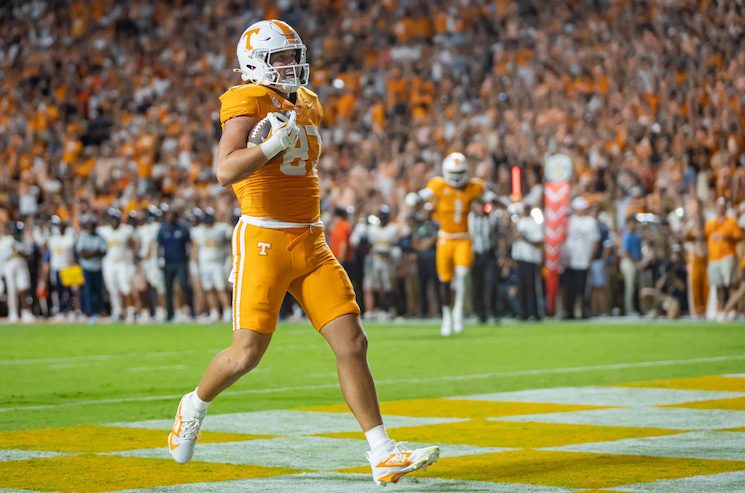
The NCAA Division I Council voted on Monday evening to approve a waiver for all student-athletes competing in spring sports to receive an extra year of eligibility to replace their year of lost eligibility due to COVID-19.
The decision came as a surprise despite the NCAA Division I Coordination Committee agreeing to the idea of giving all spring student athletes a year of eligibility back in the wake of spring sports being canceled. According to multiple reports, there was a feeling among administrators and coaches that it would be a tough sell during the Council meeting because of the uncertainty regarding football season.
After Division II, Division III, and the NJCAA announced earlier this week that everyone would be granted an extra year of eligibility – not just seniors — it would have looked odd for Division I to not do the same, though the divisions are not attached at the hip. Instead, the council followed the lead of the other divisions.
How does the NCAA Division I Council’s decision affect Tony Vitello’s Tennessee baseball program? Let’s take a look at the ramifications to the decision.
Seniors can return for another season
Most importantly for each baseball program is that seniors who decide to return for another season will not count against a program’s 11.7 scholarships, 35-man roster, or 27 counters. The school does reserve the right to pay a returning senior whatever they want as long as it doesn’t exceed the scholarship amount they had in 2020, however. If the school wanted to, it could give a student-athlete zero percent of their scholarship. This will lead to plenty of awkward conversations and tough decisions for student-athletes, as it will for the head coaches as well.
In Tennessee’s case, the Vols have three seniors on their roster: Left-handed pitcher Will Heflin, first baseman/designated hitter Pete Derkay, and catcher Landon Gray.
Derkay led the team in hitting with a batting average of .542 in 13 games. The senior went from coming off the bench at the beginning of the season as a pinch-hitter to an everyday role in the lineup. Gray hit .318 with two home runs as the team’s backup catcher while Heflin was nearing his return on the mound from a torn ACL.
All three will have the option to return. Whether or not they will want to is a different conversation.
No limit on roster size
To account for seniors returning unexpectedly, the NCAA has lifted the cap on rosters. For Tennessee, they are permitted to have a roster of 38 players next season if all three seniors return. In Vanderbilt’s case, the Commodores have five seniors, so they would be permitted to have a roster of up to 40 players. In a way, there is no roster limit for the 2021 college baseball season.
Again, Vitello will decide how much scholarship percentage Heflin, Derkay, and Gray receive, should the three decide to return for another year of college baseball. Tennessee can pay the trio anywhere from zero scholarship money to the exact percentage of scholarship money they were receiving this season.
Ramifications for junior prospects
Major League Baseball made adjustments to its annual amateur draft last week that will directly affect collegiate baseball, specifically junior prospects.
According to ESPN’s Jeff Passan, MLB and the Major League Players Association came to an agreement that a draft would indeed be held this summer and that the league has the right to limit the number of rounds to as low as five. As for now, however, the MLB has the right to move the 2020 MLB draft back from June 10th to as late as July 20th. MLB commissioner Rob Manfred also has the option to increase the number of rounds at his own discretion. He might do so if games are being played and revenue is being generated.
Had the NCAA decided not to give anyone or only seniors eligibility relief, highly-touted college junior prospects would’ve had little leverage entering a shortened, five-round draft. Juniors inclined to sign and turn pro in the 2020 draft might receive similar money to last year’s draft, but it will be paid over a two-year period without interest according to Passan.
“The loss is marginal but real,” writes Passan. “The college junior set to sign for $300,000 after the fifth round, who turned down some money out of high school in anticipation of this day, gets hit the hardest. It’s either $20,000 this year or probably the same as a senior next year, due to reduced negotiating leverage.”
The options for a junior prospect before the NCAA’s decision to grant eligibility relief was to either sign for a potentially low-ball offer if they’re drafted, sign as an undrafted free agent with a maxed out signing bonus of $20k, or return to college for another season with a chance of signing for significantly less money next summer. Now, with an extra year of eligibility in hand, juniors can avoid maxing out at $20K as a signing bonus if they were drafted outside of the top five rounds.
This directly effects a trio of Tennessee players. In a normal year, Alerick Soularie, Jackson Leath, and Zach Daniels would be drafted in the top 10 rounds of the MLB Draft, they’d sign, get paid, and start their road to the show. But now with potentially just five rounds, whether or not Leath and Daniels will be drafted is in limbo.
Soularie is viewed as a second round pick, but Leath and Daniels are viewed as fringe top-five round picks. Either could be drafted as high as the third round or as low as the seventh round in a normal year. Garrett Crochet will be headed off to professional baseball as a likely top 15 overall pick, along with Soularie. But with the advantage of returning to college with a year in hand and a year in which a shortened draft will be held, whether or not Leath and Daniels return to school is much more up in the air now than it was a month ago.
Additional questions remain
The biggest question no longer pertains to the eligibility of current student athletes now that they’ve all received their year of eligibility back. The question now shifts to what the decision means for incoming junior college transfers and existing graduate transfers.
It’ll also be interesting to see if the NCAA rules on the one-time transfer rule that they were set to vote on before everything with the Coronavirus went down. With players returning to college baseball that weren’t expected to, current players could decide to transfer in an effort to find playing time or if their scholarship money is in flux. A one-time transfer rule would be extremely helpful and beneficial to current college baseball programs who may be on the outside looking in.



